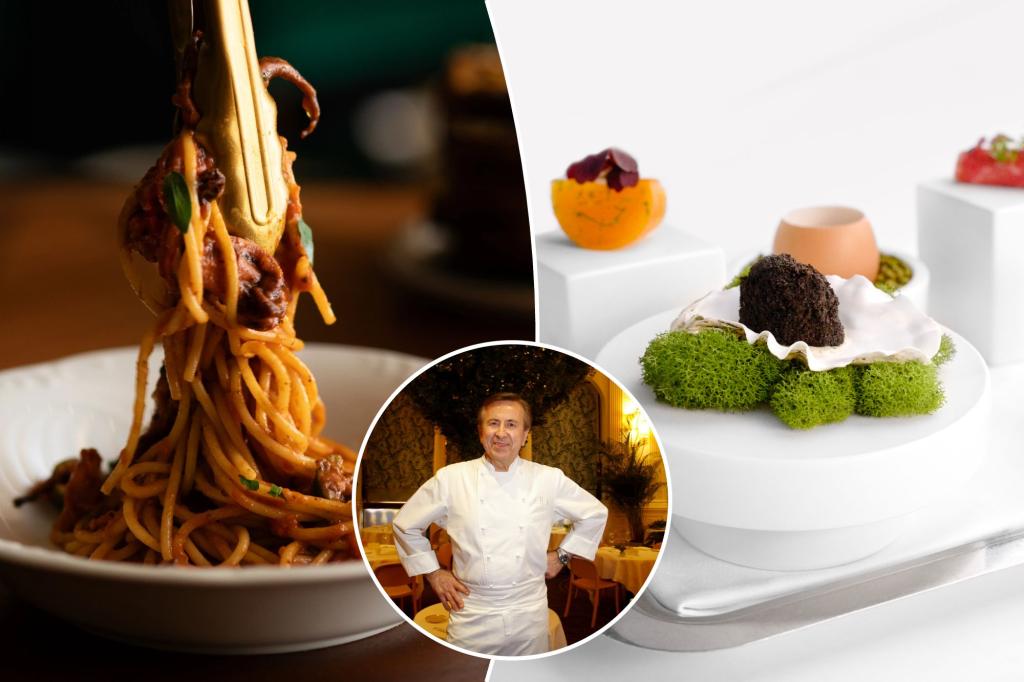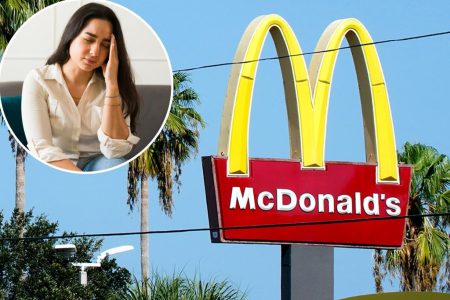Summarize this content to 2000 words in 6 paragraphs
Life’s unfair — and then there’s the Michelin 2024 guide to New York City restaurants.
If MAGA-believers and far-left progressives can agree on one book to ban, it should be the tire company’s red-jacketed travesty of culinary justice.
Twenty years since Michelin invaded the Big Apple with its hilariously error-filled debut edition, the publication remains influential enough among high-spending foreign visitors to make or break a restaurant — but with no accountability to anyone.
Unlike critics who put their names on their opinions, Michelin fields anonymous “inspectors” who may or may not have been to places they purport to judge. Their identities and the number of visits they make and when are a closely guarded secret.
Michelin’s international director, Paris-based Gwendal Poullennec, disingenuously told Eater.com this week, “We don’t share demographics or figures [regarding inspectors] because anonymity is key for independence.”
Of course, anonymity is also key to mugging someone in an alley.
There’s been lots of hype over the new book’s findings which were announced on Monday. Jungsik is New York’s first new three-star restaurant in twelve years! Woweee!
But few seem to have read the rest of the list, which is even more out of touch than previous editions and makes moronic social media posts seem astute by comparison.
Michelin awarded stars to no fewer than fourteen Japanese and eleven Korean places, many of them small counters with prices starting at $200. But only two Italian eateries received stars — Torrisi and Rezdora each got one.
This in a city full of great modern and traditional Italian restaurants, including Marea, Il Gattopardo, Locanda Verde, Lilia and Roberto’s.
To put it another way: Japanese and Korean restaurants received a total of 36 stars to a total of two for Italians. Could there possibly be a prejudice here?
We’ve enjoyed a revolution in great Chinese, from high-end Hutong to a dozen wonderful Szechuanese and Fukienese spots in the east and west 30s to tiny Cantonese joints on Mott Street — all chopped liver to Michelin.
In a city with three large, distinct Chinatowns, Michelin blessed exactly one Chinese restaurant with a star — Yingtao on Ninth Avenue, which is merely “Chinese inspired,” according to its website.
Conspicuously and outrageously missing from the ranks of star-holders is Tatiana. Bronx-raised Kwame Onwuachi’s Nigerian-influenced place at Lincoln Center has been proclaimed as one of New York City’s greatest restaurants by the New York Post, the New York Times and The New Yorker — in rare agreement. It’s earned accolades from the James Beard Foundation, Conde Nast Traveler, TimeOut New York and Forbes, which called it “the future of fine dining.”
But apparently, the tire company’s invisible judges know much more about Nigerian-style short rib pastrami suya than we Big Apple ignoramuses do.
Michelin’s tire treads ran over Restaurant Daniel, one of the nation’s most sophisticated modern-French restaurants, chopping it down from two stars to one. Having eaten there twice in the past year. I can attest that it’s a three-star place on every level and worthy of its high prices.
The diss won’t matter to Daniel’s legion of admirers in New York. But the star haircut can damage it because many big-spenders from Europe still regard the “red book” as gospel. Michelin’s death grip on French attitudes especially was reflected in the suicides of two chefs in recent decades. One feared he’d lose a three-star rating (but didn’t), while the other did lose three stars.
Michelin’s three-star roster includes just five NYC restaurants, among them Per Se. The Times’ Pete Wells famously chopped it down from four stars to two in 2016. The beatdown was so persuasive that chef Thomas Keller bought an ad in which he said, “We are sorry we let you down.”
But it sounds as if things haven’t changed much. Last week, the Times’ interim critic Melissa Clark declared the tuile holding a salmon morsel as “thick and nubby as an oatmeal cookie” with “grainy” custard. A signature oyster dish had “the gloppy texture of the tapioca pudding served at my great-aunt’s nursing home” and much of her meal was “in that gummy, starchy vein.”
New Yorkers know we have the world’s greatest collection of restaurants. We don’t need advice from a French tire company. Michelin should hit the road before it does any more damage to them.















